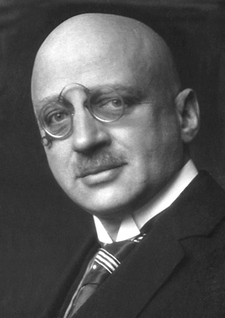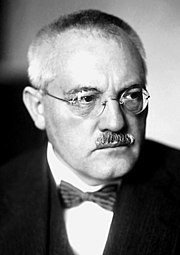Hello everyone! I recently wrote a paper about green chemistry and sustainable plastics, so if it is of interest to you, here is the raw text version! :)
Green Chemistry- The Development of
Sustainable Plastics
Jason Wei
Hurowitz-Lewis
Humanities II
Thomas Jefferson School
for Science and Technology
(Dated: May 25th,
2015)
I.
INTRODUCTION
A. The Principles of Green
Chemistry
Green
chemistry, also known as sustainable chemistry, is the relatively new concept
of designing chemical products and processes with the aim of reducing
environmental pollution (Anastas and Warner). Officially endorsed and supported
by organizations such as the American Chemical Society and the Environmental
Protection Agency, green chemistry is based upon 12 principles, which include
atom economy, use of catalysts, biodegradability, and waste minimization (Doble
and Kumar). Since its development in the early 1990s, green chemistry has been
both endorsed by environmentalist groups and adopted by chemical engineers in
countries such as Italy, Germany, and Australia (Doble and Kumar). Often the
rise of green chemistry can be connected to the relatively recent spur of
environmentalism, as supporters of one are often well-versed in the other.
B. The History of Green Chemistry
In
1962, Rachel Carson wrote the popular book Silent
Spring, revealing the danger of exposing biological ecosystems to certain
chemicals as well as initiating the rise of green chemistry and the modern
environmental movement in general (Lytle). In the early 1970s, President Nixon
established the Environmental Protection Agency (EPA), and Congress began
increasing involvement in environmental protection legislature from the 1980s
to the early 2000s; the term “Green Chemistry” was coined by staff of the EPA
Office of Pollution Prevention and Toxins in the early 1990s (“History of Green
Chemistry”). Perhaps the most important development of this time period was a
book called 12 Principles of Green
Chemistry by Paul Anastas and John C. Warner, which officially declared the
philosophy of green chemistry and continues to guide the green chemistry
movement today (“History of Green Chemistry”). Since then, chemists have won
Nobel Prizes for research in green chemistry and green chemistry journals,
conferences, and organizations have been launched all over the world.
C. Plastics
As
a large product of many industrial processes, developing sustainable plastics
has been a large focus for many green chemists and industrial engineers. A
plastic is defined as a synthetic material made from organic polymers, and
about 30 million tons of plastic waste is generated each year in the United
States (“Plastics”). With such a large output, the effect of plastics on the
environment has significantly increased over the years, and scientists are
looking for new ways to recycle plastic and produce plastic more efficiently. However,
the causes of the rise of environmental chemistry in the manufacture of
plastics have not been documented as rigorously as the innovations themselves.
To
obtain a holistic understanding of sustainable plastics, we must ask the
following actionable question: What are the
recent innovations in eco-friendly plastic, and what are the roots of this
relatively modern movement? In general, industrial improvement in
sustainable plastics can be categorized as innovations in either the production
or the biodegradability of plastics. However, the expansion of sustainable
plastics from a virtually nonexistent ideal during the World War II era to a
billion dollar modern day industry is a more ambiguous topic rooted in history,
business, or scientific research.
II.
INNOVATIONS IN SUSTAINABLE
PLASTICS
A. Advances in the Production of
Sustainable Plastics
By
improving the industrial processes of manufacturing plastics, companies can
directly reduce environmental pollution at the beginning of the plastic cycle. Much
of the innovation has been focused in using polymers that are produced
biologically instead of environmentally harmful processes that use hydrocarbons
in oil (“Plastics”). Recently, many private companies have been able to create
more efficient manufacturing processes through chemical research.
NatureWorks,
a US company based in Minnesota, has been a pioneer in innovating the
environmental production of plastic (“How Ingeo is Made”). NatureWorks created
a type of plastic named Ingeo, which is
based upon long chains of polylactide, a polymer made from naturally occurring
plant sugar (“How Ingeo is Made”). By utilizing microorganisms to convert
cornstarch into polymers, NatureWorks has managed to use agricultural wastes
and organic raw materials to create plastics instead of polluting the planet by
burning petroleum based constituents (“How Ingeo is Made”). Ingeo, which can be
applied to a variety of different uses, has a seventy-five percent lower carbon
footprint and also can be disposed of in a more environmentally-friendly fashion,
through industrial compost (“How Ingeo is Made”).
Through
the study of polylactic acid (PLA), Swiss scientists have also been able to
develop a greener way of producing plastic through the use of chemical wastes
as opposed to fresh resources (Stafford). Using a microporous chemical and
specialized catalyst to create PLA, glycerol, which is a waste byproduct of
biofuel production, can be used as the main substance in plastic production
(Stafford). Both Ingeo and PLA based plastics are important instances of the
use of wastes and recycled materials as the raw constituents of manufactured
plastic.
B. Advances in the
Biodegradability of Sustainable Plastics
In addition to innovation in the
production of plastics, much research has been focused in creating plastics
that can be biodegradable or recycled. After plastics such as those used in
disposable bags have been used, they can be made to degrade into
environmentally friendly material that can be consumed by bacteria and fungi
and recycled into carbon and hydrogen molecules that are organic (Garmson). Of
the types of biodegradable plastics, most are either hydro-biodegradable or
oxo-biodegradable (Garmson).
Hydro-biodegradable plastics are those
that begin compost by contact of water. Typically, they are made from polymers
of high molecular weight such as those from starches in plants that are used
for food; once placed in a high-microbial solution of water, they reduce to
water, carbon dioxide, methane, and biomass (“Biodegradable plastics”).
However, the quality of hydro-biodegradable plastics is inferior to
conventional plastic, and it can be four or five times more expensive than its
counterparts (“Biodegradable plastics”).
A slightly different type of
biodegradable plastic, oxo-biodegradable plastic, can sometimes be a better
alternative to hydro-biodegradable plastic. Made from nonrenewable petroleum
byproducts, the production of oxo-biodegradable plastic may be less environmentally
friendly than that of hydro-biodegradable plastic (Platt). However,
oxo-biodegradable plastic may have certain advances, as it breaks down quickly
in sunlight, heat, and other stresses, and the cost of producing it is similar
to that of producing conventional plastic (Platt). Both types of biodegradable
plastics are effectively compostable but are used in different situations.
C. Limitations of Sustainable
Plastics
Despite
new advances in chemistry that allow for plastics to be synthesized from waste
materials and can be recycled, green plastics also have some disadvantages when
compared to traditionally manufactured plastic. One large shortcoming of
environmentally friendly plastic is the high cost of producing such plastic; plastics
such as Ingeo and hydro-biodegradable
plastic are sometimes significantly more expensive than non-environmentally
friendly plastic of equal quality (Platt). Green plastics also sometimes lack
the quality of material needed for use in industrial settings, for instance, PLA
plastic is breaks down in high temperatures and thus cannot be used in thus
settings (Stafford).
Even
if some types of plastic may meet all the requirement for their needs, their
environmentally friendly purposes may not always be met. Biodegradable plastic
is only useful when consumers can properly dispose of the material, as much of
it is improperly tossed into landfills or kept untouched. Also, environmentally
friendly plastics are also harder to obtain due to special processing
requirements, and thus may provide complications for businesses striving to be
more environmentally friendly. Also, the ethics of using plants to create
plastics, such as in hydro-biodegradable plastics is questionable, as it can be
argued that many farms are better allocated to producing food for consumption.
D. Future Development of
Sustainable Plastics
The
future of developing a more sustainable plastic rests in the ability for
scientists to develop a material that can be both created using current waste
products and recycled for future use. With further research in chemical
catalysts such as those used in producing PLA, green chemists are looking to
develop more efficient methods of plastic synthesis. It is also essential for
government regulation organizations to develop standards for measuring toxicity
and environmental impact of plastic production processes, and further financial
support for environmentally green companies could also augment the green
chemistry research (Tolinski, 77). The breakthrough in creating an ideal
plastic may come from research in bio-based sources, as plastics that can be
degraded using microbes have enormous potential in terms of minimizing
environmentally harmful wastes (“Metabolix Sustainability”). It is also
important to consider that the market for environmental plastic production
processes must be expanded to developing countries as well as industrialized
ones, which can occur as a result of the gradual expansion of the green
chemistry movement.
III.
ANALYSIS- THE ROOTS OF
SUSTAINABLE PLASTICS
A. The Role of History in the
Development of Sustainable Plastics
Since
the beginning of industrialization in Great Britain in the 1780s and into US
industrialization up into the late nineteenth century, plastic has become a
major product of manufacturing (“Industrialization”). During World War II, the
growth of American manufacturing industries was vital in stimulating the
economy and bringing the United States out of the great depression, and with
the end of the war, factories converted their output from military production
to consumer goods (“At Home War Production”). However, with the end of the war
consumers were looking for more reliable plastic-based material to be used in
cars, washing machines, and radios, opposed to the cheap, throwaway plastic
that was produced during the war (Tolinski, 245). With increased worker based
due to the plethora of young war veterans, DuPont began endorsing in 1948
working in plastic manufacturing sites, augmenting the interest in developing
better quality plastic and creating an industry of plastic regulation.
(“Plastics and American Culture”). The post-WWII environment not only spurred
the development of higher-quality plastic but began the movement of sustainable
plastics.
The
development of plastics is also closely linked to legislature and popular
movements of environmentalism; legislature based by the Environmental
Protection Agency, established in 1970s, has also played a vital role in
sustainability chemistry since the initial development after WWII (“History of
Green Chemistry”). For instance, the Marine Plastic Pollution Research and
Control Act of 1987 directly funded research on the adverse effects of disposal
of plastics in the ocean and raised awareness for the need for sustainable
plastics (“Marine Debris Laws, Regulations”). In addition, consumer awareness
of environmental issues has increased through environmental tragedies such as
the 1969 California oil spill, and the etymology of the word plastic developed
to also mean “cheap, flimsy, or fake”, a result of the plot in one of the most
popular movies of 1968, The Graduate
(“The History and Future of Plastics”). Even today, the ultimate symbol of the
pollution caused by plastic, a large conglomeration of plastic garbage the size
of Texas floating in the Pacific, is known as the Great Pacific Garbage Patch (“The History and Future of Plastics”).
Similar
patterns can be seen with the growth of second and third world countries such
as China and India. As these countries begin to build manufacturing plants and
produce more consumer goods, their economies have also undergone heavy plastic
production patterns (Tolinski, 245). However, with the historic trend of
economic slowdown after enormous periods of growth such as that following the
collapse of communism in China, there has been a recent shift from large
quantity industrial production to an emphasis on restructuring and upgrading,
which will require the development and analysis of higher-quality plastics
(Qian, 2). The Chinese central government has also been essential in the
development of environmental plastics in China, with laws such as that passed
by the Chinese General Administration of Customs placing severe regulations on
the import of plastics acting as incentives for the development of green
plastic research (Huang, 1).
B. Business Motives in the
Development of Sustainable Plastics
Often,
business gains served as prime motivators when companies devised new methods to
manufacture more environmentally friendly plastics. Perhaps the earliest
instance of this occurred shortly after World War II, when many consumers did
not trust the quality and reliability of plastics due to experiences with cheap
war-time materials that broke easily and were sensitive to heat (“Plastics and
American Culture”). At this time, development of a collection of plastic
products called Tupperware by Earl Tupper and Brownie Wise popularized the use
of plastics in the home environment and signaled a move to an overall
acceptance of plastic as a reliable material (The History of Tuppeware).
Another
shrewd move of developing sustainable plastics with business motivation came
from America’s most iconic brand, Coca-Cola (“Plant Bottle Technology”). By
introducing PET PlantBottle, which is made from 30% plant based content from
sugarcane ethanol, Coca-Cola not only appealed to consumers as an
environmentally friendly company but also served as a promising example in
sustainable plastics for other heavy-plastic producing companies (Tolinski,
246). Since its introduction, Coca-Cola’s PlantBottle campaign has led to the
production of fifteen billion eco-friendly bottles and five hundred twenty-five
thousand barrels of oil originally allocated to producing plastic (“Plant
Bottle Technology”). At the same time, PepsiCo also announced plans to use
non-food plants and agricultural wastes from the company’s food production
facilities to create a 100% bio-based PET beverage bottle (Tolinski).
In
addition to industrial-scale manufacturing giants promoting sustainable
plastics, smaller companies have also been created solely for the purpose of
researching and manufacturing sustainable plastics. As the EPA passes more laws
regulating the emissions of plastics and as the environmental movement expands
to encompass a greater portion of the consumer population, the advertising
benefits of being an environmentally friendly business have increased, and thus
green-plastic companies have developed to support the push for eco-friendly
companies. Metabolix, a business focused solely on creating an economically
friendly plastic packaging material, has researched and developed C4 and C3
chemicals to produce plastic using renewable feedstocks (“Metabolix
Sustainability”). The rise of environmentally based companies has also allowed
for an increased economic interest in sustainable plastics, as manufacturing
plants that struggle to meet certain environmental regulations can instead
invest in “green stocks”, which allows for the direct financial growth of
companies developing environmentally friendly plastics (Defotis).
C. Scientific Research in the
Development of Sustainable Plastics
Research
on the environmental effect of plastics began in the 1970s and early 1980s
(“The History and Future of Plastics”). As concern about wastes increased,
environmentalists began to research the danger of plastic on biological life
such as marine animals; scientists found that toxic additives in plastic bags
such as flame retardants, antimicrobials, and plasticizers disrupted the endocrine
system of marine organisms (Beans). Such studies have caused public outcry for
reduction in consumption of plastic bags, and a statistic published by an
article in 2013 claimed that one in three leatherback sea turtles has plastic
in its stomach (Beans). Such research on the effect of plastic litter on marine
life has shifted the products of cheap, disposable plastics to biodegradable,
sustainable plastics that are less harmful to sea life (Tolinski, 246).
Scientific
research on the effect of plastics on humans has also changed the plastic
manufacturing industry, not only decreasing the desire for disposable plastics
but perhaps even decreasing the use of plastics all-together. In 2003, a study
conducted by the Centers for Disease Control and Prevention (CDC) found
detectable levels of BPA, a chemical used in the production of polycarbonate
plastics, in ninety-three percent of urine samples from people six years or
older (Bisphonal A). A chemical called DEHP, Di (2-ethylhexyl) phthalate, has
also been found in similar quantities and is known to alter birth patterns in
humans (“Plastics that May Be Harmful”). Such studies of the harmful effects of
plastics on both nature and humans have increased popular concern for the
harmful effects of non-recyclable plastics, consequently fueling not only
research for sustainable plastics but also the business advantages of producing
eco-friendly plastic-based products.
D. Trends
Despite
concerns of the dangers of non-recyclable plastic, overall plastic has been
growing at a study pace since its popularization following World War II. According
to the Freedonia Group, Inc., the annual market growth rate for recycled
plastic was 3.9% in 2014, and for which there was a 13.6% growth grade in
degradable packaging, fueled by the development of bioplastics (Tolinski, 246).
BBC has also predicted that the global market for bio-based plastics will grow
to 3 million tons in 2015, with the fastest growth in the Asian-Pacific and
South American regions (Tolinski, 246). A significant push for sustainable
plastic will come from the depletion of the world’s oil resources, as the
increasing expenses of drilling oil from the ground will make green plastic
comparatively cheaper (Tolinski, 247). As more countries become industrialized,
plastic will be produced in greater amounts to meet the needs of the growing
population and more people will become interested in manufacturing
environmentally friendly plastic.
IV.
CONCLUSION
By
analyzing recent advances in sustainable plastic, developments can be
appropriately categorized into innovations in either the production of the
disposal of plastic. Though many challenges are faced by those attempting to
reform plastic to become environmentally friendly, innovations in green
chemistry have provided a large source of the changes in producing plastic. The
development of the plastic industry was rooted in changes in history, business,
and scientific research that benefited those who supported sustainable
plastics. In the future, sustainable plastic can be expected to become an even
larger portion of not only the modern environmental movement but also the
manufacturing industry as a whole.
Full MLA Annotated Works
Cited
Anastas, Paul, and John Warner. "12 Principles of Green
Chemistry." American Chemical Society.
N.p., n.d. Web. 14 Mar. 2015.
<http://www.acs.org/content/acs/en/greenchemistry/what-is-green-chemistry/principles/12-principles-of-green-chemistry.html>.
Ashley, Steven. "It's Not Easy Being Green." Scientific American Apr. 2002: n. pag.
Print.
"At Home War Production." PBS. N.p., n.d. Web. 15 Mar. 2015.
Beans, Laura. "Silent Killers: The Danger of Plastic Bags to
Marine Life." EcoWatch: n. pag.
Print.
"Biodegradable Plastics." Atlantic Poly. N.p., n.d. Web. 30 Jan. 2015.
<http://atlanticpoly.com/biodegradable-plastics>.
"Bisphenol A." National
Institute of Environmental Health Science. N.p., n.d. Web. 15 Mar. 2015.
Defotis, Dimitra. "5 Earth-Friendly Stock Picks to Beat the
Market." Barron's: n. pag.
Print.
Doble, Mukesh, and Anil Kumar. Green
Chemistry and Engineering. N.p.: Academic Press, 2007. Print.
Garmson, Eleanor. Plastics
and Environment. N.p.: n.p., 2010. Print.
"The History and Future of Plastics." Chemical Heritage Foundation. N.p., n.d.
Web. 15 Mar. 2015.
"History of Green Chemistry." American Chemical Society. N.p., 2014. Web. 9 Jan. 2015.
The History of Tuppeware Home Parties. Tupperware, n.d. Web. 15
Mar. 2015.
"How Ingeo is Made." Natureworks.
N.p., n.d. Web. 30 Jan. 2015.
<http://www.natureworksllc.com/The-Ingeo-Journey/Eco-Profile-and-LCA/How-Ingeo-is-Made>.
Huang, Kevin. "China's new regulation shakes up plastic
recycling industry." Plastics News:
n. pag. Print.
"Industrialization." Marshall
Cavendish Digital. N.p.: n.p., n.d. N. pag. Marshall Cavendish Multicultural Reference Center. Web. 15 Mar.
2015.
Lytle, Mark Hamilton. Gentle
Subversive: Rachel Carson, Silent Spring, and the Rise of the Environmental
Movement. N.p.: n.p., 2007. Print.
"Marine Debris Laws, Regulations, Treaties." Environmental Protection Agency. N.p.,
n.d. Web. 15 Mar. 2015.
"Metabolix Sustainability." Metabolix. N.p., n.d. Web. 30 Jan. 2015.
<http://www.metabolix.com/Innovation/Sustainability>.
Plant Bottle Technology. Coca-Cola, n.d. Web. 15 Mar. 2015.
"Plastics." Environmental
Protection Agency. N.p., n.d. Web. 15 Mar. 2015.
<http://www.epa.gov/osw/conserve/materials/plastics.htm>.
"Plastics and American Culture After World War II." PBS. N.p., n.d. Web. 15 Mar. 2015.
"Plastics that May Be Harmful to Children and Reproductive
Health." Environmental and Human
Health. N.p., n.d. Web. 15 Mar. 2015.
Platt, Brenda. "Biodegradable Plastics." Sustainable Plastics. N.p., n.d. Web. 15
Mar. 2015.
Qian, Guijing. "China's Plastics Processing Industry Adapts
to a New Era." Plastics Engineering:
n. pag. Print.
Stafford, Matt. "Swiss Researchers Create Eco-Friendly
Biodegradable Plastic from Biofuel Waste." Smithsonian.com. N.p., n.d. Web. 30 Jan. 2015.
Tolinski, Michael. Plastics
and Sustainability: Towards a Peaceful Coexistence Between Bio-Based and Fossil
Fuel-Based Plastics. N.p.: Wiley-Scrivener, 2011. Print.














